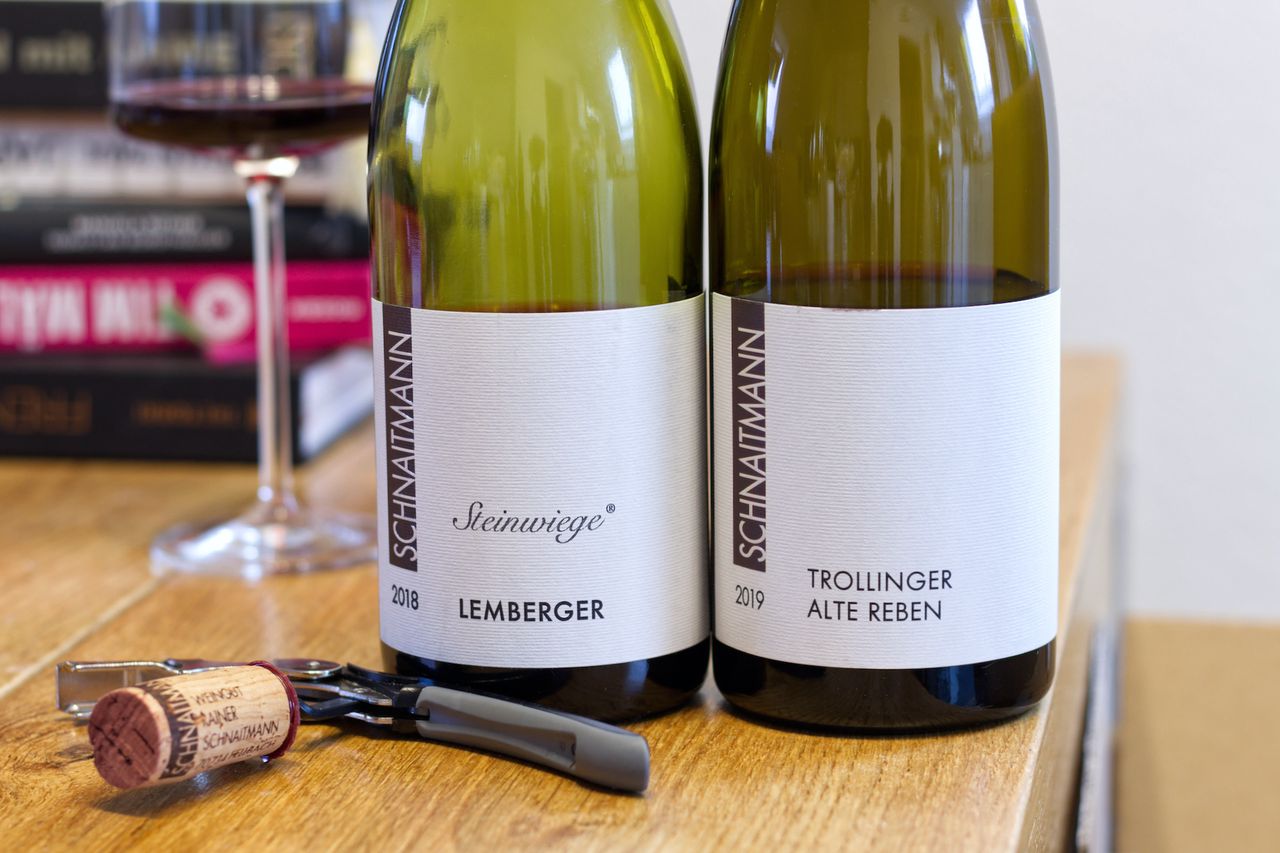Two Bottles Schnaitmann
We drink a Trollinger Alte Reben 2019 and a Lemberger Steinwiege 2018 from the Schnaitmann winery.

The combination and the wines last week were so good that we decided to do that all over again. So again Württemberg, again Lemberger and yes, also again Trollinger. We drink from the winery Schnaitmann, from which we already had two bottles of matured Riesling in the glass, a Lemberger Steinwiege 2018 and a bottle of Trollinger Alte Reben from 2019. The Trollinger Alte Reben, at least, appears again and again, when someone somewhere speaks about the new Trollinger and of the fact that it is appearantly possible to get quite good wines from Trollinger. So it’s time to give it a try. The grapes for the wine grow on 30 to 45 year old vines. The wine is fermented spontaneously with whole berries and in parts grapes and then aged in old 300 liter barrels and stainless steel. Bottled without sulfur and without filtration with wax over the cork. Here, fortunately, cooperative and easy to remove. Which is not alway the case with wax on a bottle. Steinwiege is Schnaitmann’s protected designation for single-varietal estate wines from classified sites. The Lemberger is fermented spontaneously with whole grapes and then aged for 15 months in old wood. It is also bottled without sulfur and without filtration under screw cap. Two times swabian Landwein.
We start with the Trollinger. The fruit is bright and red. You can smell cherries, plus a bit of marzipan. A slight stink behind it. This seems totally elegant and wild and boisterous at the same time. The acidity on the tongue is superb, the tannin fine but present, some underbrush and lots of juiciness. Never in my life would I have guessed Trollinger. And with air comes the slightly bruised, slightly dirty berry fruit that was so pleasing in the Trollinger last week. The acidity vibrates, is lively and the tannin complements. We call that Viertele schlotzen around here. 30 degrees, balcony and the 11% alcohol help. If this is how Trollinger is made now, then the better half from Baden also drinks it in large gulps. She’s just not allowed to tell that at home. If that’s not Saufwein, then I don’t know what else is. The leftover wine in the bottle disappears a day later just as quickly in our glasses and then in us.
The Lemberger has lots of berries on the nose. Especially red and black currants. Really a lot of currants right after opening. Plus a bit of fruit tea, spice and a few herbs. The wine seems super fresh on the tongue and still a bit uncluttered and scrubby. Whereby scrub does not sound right, rather the green stems of currants. The fruit, meanwhile, is becoming denser, deeper and sweeter with air. This is probably a greeting from hot and dry 2018. The scrub disappears, the tannin is now super integrated and totally soft. Hard to believe it says Gutswein on the capsule. But after checking again, I can confirm that it really does.
The fruit gets even darker overnight. Licorice comes in, the currants recede. Now there are plums, sweet and dark. In addition, the herbs and the acidity, which I like even better today. It’s just right to keep up with the fruit. I like that.
At the end, another topic. It’s hard not to be confronted with images of the Ahr in all corners of the wine world right now. The water has taken an unimaginable toll there. It is certainly only a small contribution, but as a wine drinker and wine buyer there is in many places the possibility to at least financially help a little. One possibility is the #solidAhrität campaign started by Dirk Würtz from the St. Antony winery and many other packages under this or other names or also directly, for example, at the VDP. If you want, you can find something. In case of doubt, the search engine of choice will help.